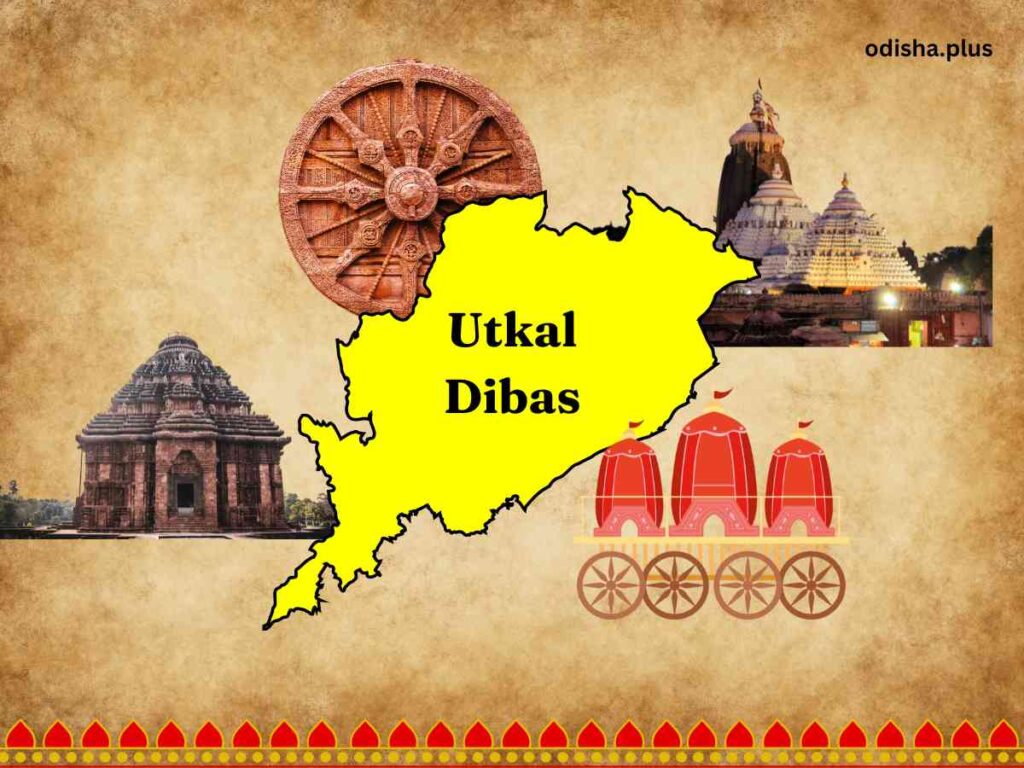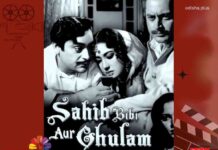Utkal Diwas inspires Odias to promote their language, culture & traditions while addressing disputes to protect the state’s interests & strive for economic & cultural growth
Tejeswar Patnaik

1st April is celebrated every year as the Utkal Diwas, ‘Odisha Day,’ as on this historic day in 1936, the British Government declared Odisha a separate state based on linguistic identity.
It was a watershed moment for millions of Odia-speaking people with the restoration of their pride. It could not have been possible without the sacrifices and invaluable contributions of the pioneers of Odia nationalist leaders Madhusudan Das, Gopabandhu Das, Fakir Mohan Senapati, Maharaja Krushna Chandra Gajapati, and a host of other great luminaries.
Before this, the colonial British authority amalgamated various regions of Odisha with other provinces such as Bihar, central Province, and Madras presidency, causing enormous suffering for the Odia-speaking people, who were left neglected for decades by those provincial Governments. The people of Odisha tirelessly fought for recognition of their culture, language, and history, despite the British Government’s indifference.
Odia nationalism found expression in literature and culture due to the pivotal role of some prominent Odia poets and writers during those times, thus reinforcing Odia identity through their works.
Legacy of Culture
A peek at the state’s history bears true testimony to the state’s rich cultural heritage, adorned by historical and religious monuments, archaeological sites, traditional arts, unique temple architecture, sculptures, classical dance, music, and the rich language that traces their origins to ancient times. It is also well-known for its rich mineral reserves. Once known as the Kalinga, the state traversed a long historical journey, overcoming several challenges, including geographical, linguistic, and cultural identities. Odisha is also home to Jainism and Buddhism.
The legendary ruler Kharvela from the Chedi dynasty ruled ancient Kalinga (present-day Odisha) and was renowned for his military conquests, patronage of Jainism, and contributions to art, culture, and infrastructure. Known as Maha Meghavahan, Kharvela was one of the greatest warriors of ancient India for expanding his Kalinga’s empire in 1st BCE through successful campaigns, including the conquest of the Magadha kingdom and South India.
A great patron of Jainism, he played a key role in reviving and promoting the religion. His most notable architectural contribution is the Hathigumpha inscription in Udayagiri, which details his achievements and governance. Under his rule, Kalinga flourished as a center of trade, culture, and religious tolerance.
A glimpse into Odisha’s medieval history reveals the accomplishments of the valiant Gajapati dynasty of the 14th and 15th centuries, which expanded its rule over large parts of eastern and southern India through conquest. The region’s political landscape in pre-independent India was marked by constant upheavals under the Mughals, Marathas, and the British.
The Gajapatis were great patrons of temple architecture, promoting the Kalinga style, characterized by towering shikharas (spires) and intricate carvings. They contributed to the construction and renovation of iconic temples, including the Jagannath Temple in Puri and the Lingaraj Temple in Bhubaneswar. Their rule marked a golden era in Odishan architecture, blending religious devotion with artistic excellence, as seen in the grandeur of the temples.
Resistance and Struggle
Odisha was the birthplace of India’s first armed rebellion against British rule—the Paika Bidroha of 1817. The warrior militia revolted against oppressive land policies, shaking the British administration. Though the uprising was suppressed, it played a crucial role in impacting the broader freedom struggle. The famous Paika Rebellion (Peasant revolt) by Buxi Bangabandhu Bidyadhar Mahapatra was hailed as the first uprising against the British administration in Odisha in the year 1817.
The peasants of Khurda and the people of other regions of Odisha revolted against the oppressive Britishers. It is pertinent to mention that the Paika Bidroha (Peasant militia revolt) was considered to be the first war of independence against the British colonial administration.
The Peasant militia identified themselves as the saviour of Odisha‘s cultural traditions and fought against British domination. There were tribal uprisings, too, like the Ghumsur uprising and other revolts against colonial rule, thus igniting Odia nationalism. The effect of the Great Indian Revolt of 1857 was significantly felt in Odisha.
As a result, a great nationalist from Odisha, Veer Surendra Sai, led the Sambalpur revolt against the British forces. There were other peasant revolts against the British administration, which faced tough challenges in suppressing them. Having realized the bravery of the Odia race, the British strategically divided Odisha—amalgamating its coastal, southern, and western regions with Bengal, Madras, and Central Provinces, respectively—causing linguistic and cultural marginalization.
The continued neglect of Odias and their language gradually gained momentum, leading to the demand for a separate Odisha state in the 1920s and 1930s, led by organizations like Utkal Sammilani, founded in 1903. The movement intensified during the Simon Commission’s visit as protests erupted, reinforcing the call for a distinct Odia identity.
Apart from the above groundbreaking events, Odisha carved out a separate identity for its rich and unique cultural heritage. Bali Yatra, a historic festival in Odisha, commemorates the ancient maritime trade between Kalinga (present-day Odisha) and Southeast Asia, particularly Bali. It indicates how Odisha had flourishing trade and commerce in ancient times.
Vibrant State
Today, Odisha stands as a vibrant state with a rich cultural legacy and a language dating back to ancient times. Known as the land of Lord Jagannath, it remains central to India’s socio-cultural and religious fabric. In 2013, Odia was recognized as a Classical language for its long literary tradition and unique linguistic features, thus marking a historic milestone.
Odia language evolved from old Indo-Aryan languages and began to take shape as a distinct language subsequently. Odia boasts a rich literary heritage with a diverse range of poetry, prose, and drama. Fakir Mohan Senapati, considered the father of modern Odia literature, introduced a new literary style and social consciousness in his writings.
From classical literature and poetry to traditional music and dance forms like Odissi, Odia language and culture have evolved with richness through centuries of history. It is also worthwhile to recall the crucial role of Panch Shakhas (Five saints), namely Balarama Das, Jagannath Das, Achyutananda Das, Yasovanta Das, and Ananta Das, in 16th century in enriching Odia literature and spirituality.
Their works not only made Hindu scriptures more simplified for the easy understanding of common men but also infused Bhakti (devotional) elements into Odia literary tradition. Besides the famous classical Odissi dance, the state boasts rich traditional folk dance, folk songs, and music.
Age-old Odissi music, which richly deserves classical status, is known for its unique blend of lyrical and melodic beauty. While the state government has previously advocated for this recognition, the Central Government has yet to grant it. Leading socio-cultural organizations, like Neelashaila, and other eminent scholars on classical music have been consistently championing this cause.
Given its deep cultural and emotional significance for Odias, the current BJP government in Odisha should pursue it with the Central Government. Granting classical status to Odissi music would be a moment of immense pride for Odias. This apart, the state’s cultural heritage extends beyond music, encompassing its rich culinary traditions, including its distinctive cuisine and delicious traditional sweets, which are a source of great pride for Odias.
Utkal Diwas, celebrated on April 1st every year, serves as a reminder of Odisha, which remains the land of Lord Jagannath and is deeply rooted in the spiritual and cultural fabric. The state is blessed with abundant mineral resources—coal, iron ore, bauxite, manganese, and nickel contributing substantially to India’s economy.
Human Resources
It is worth highlighting that numerous Odias working outside the state and overseas have brought great honour to Odisha by excelling in various fields such as science, technology, medicine, administration, finance, education, health, and business. Their achievements not only showcase their brilliance but also reflect the rich talent and potential of the state.
The State Government should recognize their achievements and seek their cooperation in realizing the vision of a developed Odisha (Viksit Odisha-2037). As the state approaches the centenary of Utkal Diwas in 2037, Odisha must strive for economic and cultural growth.
Protecting the interest of the state is of paramount importance for all stakeholders. Currently, Odisha faces key disputes with Chhattisgarh and Andhra Pradesh over the Mahanadi dam projects and the Polavaram project, respectively which threaten the interests of our state. Political leaders, therefore, must set aside differences and unite to protect the state’s rights.
Utkal Diwas is not merely a celebration of the past; it serves as a powerful reminder for every Odia to reflect on our glorious heritage and, more importantly, to actively promote the Odia language, culture, and traditions with a deep sense of pride and responsibility. The way forward is our renewed commitment to translate into actions, which should speak louder than words.
(The writer is a former Dy General Manager of Bank of India. Views expressed are personal.)



























